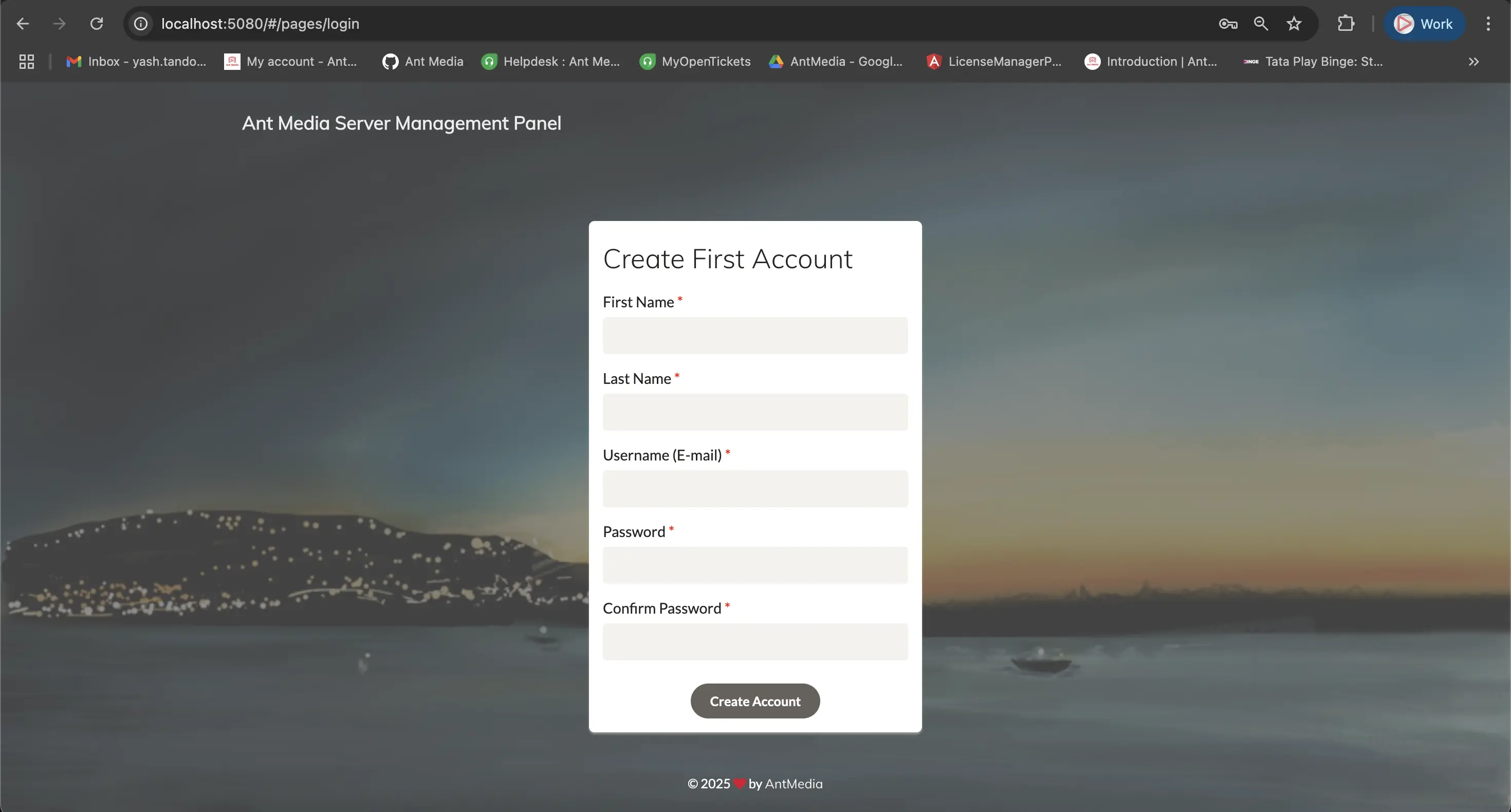Install with Docker
To use the Ant Media Server Enterprise Edition official Docker Hub image, you can execute the following command, which will pull the latest version directly from Docker Hub and run the container.
docker run --restart=always -d --name antmedia --network=host -it antmedia/enterprise:latest
OR
docker run --restart=always -d --name antmedia -p 5080:5080 -it antmedia/enterprise:latest
Once the container is running, reach out to the AMS dashboard and start streaming as explained below.
But in case you want to create your own AMS Docker image to run the container, follow the below procedure:
1. Download Dockerfile
wget https://raw.githubusercontent.com/ant-media/Scripts/master/docker/Dockerfile_Process -O Dockerfile
2. Build Docker Image
You can perform the build process by entering your license key or having the zip file.
- Enter a license key as an argument as follows, and then the build process will start.
The license key is required in the case of Ant Media Server Enterprise Edition only.
By default, it will directly fetch the current latest version image.
docker build --network=host -t antmediaserver --build-arg LicenseKey=<Your_License_Key> .
- Download and save the Ant Media Server ZIP file in the same directory as the Dockerfile. Then run the docker build command from the command line.
Enterprise Edition:
You can get the AMS Enterprise Edition Zip file from your Ant Media account after purchasing the license.
For example, if the zip file name is ant-media-server-enterprise-2.14.0-20250513_1544.zip
docker build --network=host -t antmediaserver --build-arg AntMediaServer=ant-media-server-enterprise-2.14.0-20250513_1544.zip .
Community Edition:
You can get the AMS Community Edition Zip file from the Ant Media Server GitHub release page.
For example, if the zip file name is ant-media-server-community-2.14.0.zip
docker build --network=host -t antmediaserver --build-arg AntMediaServer=ant-media-server-community-2.14.0.zip .
3. Run Docker Container
Now we have a Docker image with Ant Media Server. Run the Docker container with the below command:
docker run --restart=always -d --name antmedia --network=host -it antmediaserver
By default, it uses the host network ports to reach but for example, in Mac OS, the network=host does not work so you can define the port as shown below.
docker run --restart=always -d --name antmedia -p 5080:5080 -it antmediaserver
In the above example, we used only port 5080 for HTTP but for example, RTMP uses port 1935 so it needs to be added separately.
docker run --restart=always -d --name antmedia -p 5080:5080 -p 1935:1935 -it antmediaserver
Similarly, more ports can be allowed as per requirements.
4. Volume
Optional: If you would like to use persistent volume, you can use it as follows. In this way, volume keeps even if your container is destroyed.
docker volume create antmedia_volume
docker run -d --name antmedia --mount source=antmedia_volume,target=/usr/local/antmedia/ --network=host -it antmediaserver
AMS Dashboard
After the Docker container starts, reach out to http://localhost:5080 or http://host-IP:5080 to access the Ant Media Server dashboard.

Check out here to publish a WebRTC stream for testing.